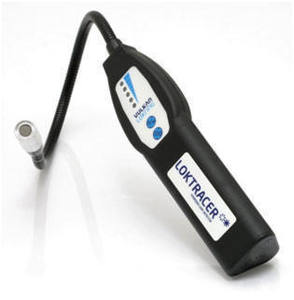
Pressure and Your Leak Rate- Helium Leak Detection
Pressure and leaks go together. More leaks cause you stress and for that Dr. Phil may be the answer. But what about test gas pressure in your test object.
Will not being concerned about pressure in your test object give you leaky parts that fail in the field? The answer is yes and that should be cause concern or an increase in pressure of the Dr. Phil variety.
When visiting production leak testing customers, everyone seems to have a good idea of their leak rate. I visit a lot of customers sniffing for helium and/or hydrogen. At these visits I ask them their leak rate specification and are commonly told “ Our leak rate is 0.10 oz/yr of R410A”. But in reality, what they should have said was “My leak rate specification is 0.10 oz/yr at 400 psi”.
It makes total sense that as you increase the pressure,in the test object, the leak rate increases. Most of the time in sniffing the tracer gas, the pressure is kept to a maximum of 150 psi as a safety concern. But many times, the operating pressure of the unit is up to 400 psi. As you increase pressure, the volume of test gas used increases. With the cost of helium rising there is a temptation to reduce the test pressure to save money. So how much difference can pressure make?
For sniffing the leak rate equation is based on “Poiseuille’s” equation for viscous flow where Q is the flow or leak rate:
Q = D4 (P12 - P22)
-------------------
256nL
Q= Leak rate in atm. cc/sec.
D= Leak Diameter in cm.
n= Gas viscosity in bar sec.
L= Length of leak in cm.
P1= Test pressure on one side of leak (bar).
P2= Test pressure on other side of leak (bar).
Looking at the equation, you see that pressure is squared, thus a product in operation at 400 psi (27.2 bar) compared to testing at 150 psi (10.2 bar) is quite a difference.
Taking 27.2- 10.2 = 17 bar squared -= 289 times greater leak
So the product operating at 400 psi, that leak shown at 150 psi is now 289 times larger.
Moral of the story is that if your product passes a 0.10 oz/yr leak test at 150 psi, in the field running at higher pressures, the real product operating leak rate is much larger than the low pressure test leak rate.
Schoonover Inc. ( www.schoonoverinc.com ) represents companies for helium leak detectors and helium leak testing systems. For further questions on your application contact us at 800-331-2808 or at info@schoonoverinc.com.

